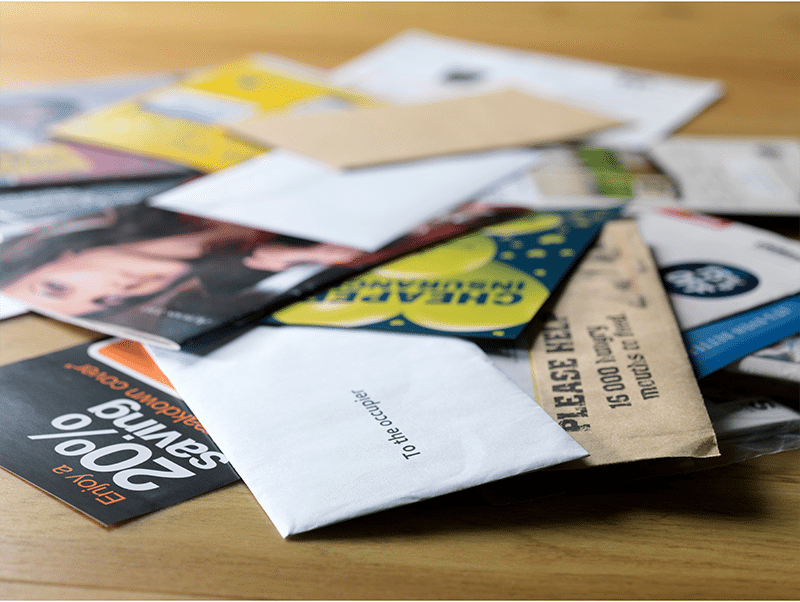Direct Mail remains one of the most effective marketing channels, combining physical engagement with targeted messaging. With decades of experience optimizing mail campaigns for businesses of all sizes, we’ve collected and answered the most frequently asked—and praised—questions we hear from clients, marketers, and partners.
1. Does Direct Mail still work in the digital age?
Absolutely. Direct Mail has an 80% open rate, significantly higher than email’s average of 20–25%. According to the Data & Marketing Association (DMA), response rates for Direct Mail to house lists are around 9%, compared to 1% for email. What makes it powerful is its tactile nature—people trust and remember physical mail more. When integrated with digital efforts, the impact multiplies.
2. How can I target the right audience with Direct Mail?
Effective targeting starts with clean, segmented data. We use demographic, behavioral, and purchase history insights to create hyper-targeted mailing lists. Additionally, tools like USPS Every Door Direct Mail (EDDM) can help saturate a neighborhood or ZIP code, while Variable Data Printing lets you personalize pieces for each recipient.

3. What kind of ROI can I expect from a Direct Mail campaign?
The return on investment varies by industry and strategy, but many clients report ROIs between 5:1 and 10:1. Campaigns that include strong calls-to-action, personalization, and tracking mechanisms (like promo codes or QR codes) yield the best results. One study found that 60% of catalog recipients visited the website after receiving mail, often leading to repeat conversions.
4. How do you track performance from physical mail pieces?
Tracking is embedded from the start. We use personalized QR codes to link offline activity to online conversions. With today’s CRM tools and analytics integrations, clients can trace every mail-driven interaction from mailbox to purchase.
5. What design elements make Direct Mail more effective?
Mailers that perform well share a few key elements: attention-grabbing headlines, clean layouts, bold offers, and a single clear CTA. Personalization (like using the recipient’s name or local references) also boosts engagement. Postcards with oversized formats or interactive elements—such as peel-away stickers or magnets—consistently outperform plain letters.
6. How often should I mail to my audience?
Consistency builds trust. A general rule is to start with one mailing per month for prospecting and increase to bi-weekly or weekly for warm leads or promotions. For nurture sequences or drip campaigns, a series of 3–5 pieces spaced 7–10 days apart often produces the best results. Frequency should always be guided by list responsiveness and ROI data.

7. Is personalization worth the extra cost?
Yes—by a wide margin. Personalized mail outperforms non-personalized mail by up to 135% in response rate. Using Variable Data Printing, we can adjust names, offers, imagery, and even messages based on user behavior or demographics. It deepens the connection and boosts relevance, which is key to conversion.
8. What are the most common mistakes companies make with Direct Mail?
Some of the most costly errors include poor list quality, generic messaging, weak offers, and no tracking mechanisms. Another big mistake is failing to follow up. Direct mail should rarely be a one-off; building a sequence increases response dramatically. Lastly, many overlook the importance of testing—A/B testing headlines, layouts, and formats is critical to optimizing over time.
9. How far in advance should I plan a campaign?
Ideally, give yourself 4–6 weeks from concept to mailbox. This includes design, list preparation, printing, mailing, and USPS delivery time. For high-volume or seasonal campaigns, allow a buffer of 1–2 weeks to ensure everything runs smoothly. Rushed jobs can compromise quality or effectiveness.
10. What formats work best: Letters, Postcards, or Catalogs?
It depends on the goal and audience. Postcards are cost-effective and ideal for quick promotions or reminders. Letters add a sense of formality and are great for fundraising or B2B outreach. Catalogs work well for showcasing multiple products and driving traffic online or in-store. Testing different formats with your audience will reveal what resonates most.
Conclusion
Direct Mail continues to evolve as one of the most strategic and measurable marketing tools available. With smart targeting, compelling creative, and integrated tracking, businesses can consistently drive results that surpass digital-only channels. These top 10 questions reflect both curiosity and strategy—and the answers are grounded in proven outcomes.
